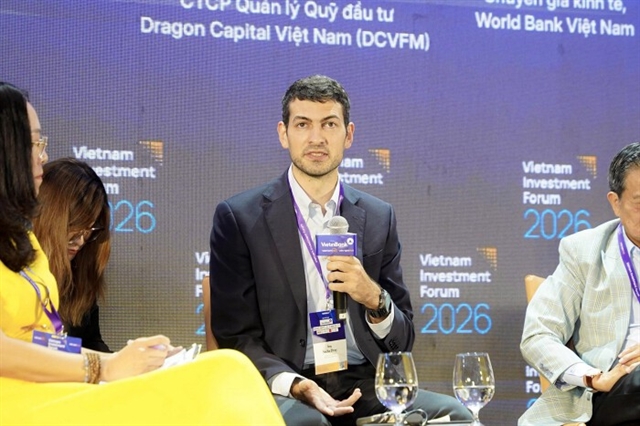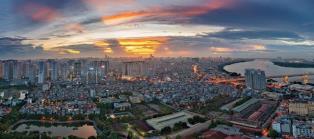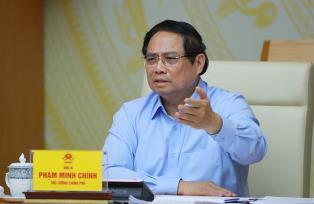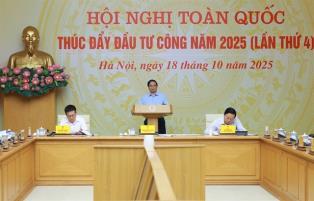Việt Nam well positioned for breakthrough growth in 2026 as global investors renew confidence
At the Vietnam Investment Forum 2026 in HCM City on Tuesday, policymakers, economists, and business leaders expressed cautious optimism about the country’s economic prospects, highlighting its expanding role in global supply chains, improving fundamentals, and stable policy environment.

HCM CITY — After a turbulent few years marked by global trade disruptions and shifting tariff regimes, Việt Nam is re-emerging as one of Asia’s most promising growth stories, with economists and investors forecasting a decisive upswing in 2026 driven by strong export recovery, resilient domestic demand, and renewed foreign investment.
At the Vietnam Investment Forum 2026 in HCM City on Tuesday, policymakers, economists, and business leaders expressed cautious optimism about the country’s economic prospects, highlighting its expanding role in global supply chains, improving fundamentals, and stable policy environment.
Lê Duy Bình, director of Economica Vietnam, said Việt Nam remained among the few economies capable of sustaining robust growth despite global headwinds.
“Việt Nam is one of the few economies capable of maintaining growth between 6.5 and 7 per cent in a volatile global context, and we can do even better in 2026,” he said.
Exports, foreign investment, and domestic consumption were all regaining strong momentum, he added.
Economists said the country continued to benefit from the global trend of supply chain diversification away from China.
New foreign direct investment (FDI) inflows, particularly in electronics, semiconductors, renewable energy, and logistics, had increased steadily through 2025.
Việt Nam’s total export-import turnover was expected to reach between US$800 billion and $850 billion in 2026, reflecting deeper trade integration and expanding production capacity.
Lê Anh Tuấn, chief economist at Dragon Capital, said the shift toward high-tech manufacturing and green industries was gaining speed.
“FDI flows into high-tech manufacturing and green industries are gathering pace. If policy execution remains consistent, Việt Nam could achieve GDP growth of 8–10 per cent in 2026,” he added.
“Remarkably positive progress”

Sacha Dray, an economist at the World Bank Vietnam, said the country’s economy demonstrated “remarkably positive progress” despite global challenges, pointing to signs of recovery across multiple sectors.
“Việt Nam’s business registrations have increased by 8.2 per cent year-on-year — the fastest rate in the region — while exports to the US have risen by 23 per cent to a record $113 billion,” he said.
“These figures reflect both the resilience of Vietnamese enterprises and the effectiveness of macroeconomic policies.”
Dray, who focuses on fiscal policy and economic development at the World Bank’s Hanoi office, added that Việt Nam’s growing foreign reserves and prudent monetary stance provide a strong buffer against external shocks.
“If these positive trends continue, Việt Nam could position itself as one of the most dynamic investment destinations in Asia in 2026,” he said.
Core growth engines
Forum participants identified public investment, private and foreign capital, and domestic consumption as Việt Nam’s three core growth engines in 2026.
Accelerated infrastructure disbursement, continued private-sector expansion, and strong retail demand, which rose 9-11 per cent this year, were highlighted as major drivers.
Dr Phan Đức Hiếu, permanent member of the National Assembly’s Economic Committee, said stable macroeconomic indicators were sustaining investor confidence.
“Việt Nam’s moderate inflation, low public debt, and controlled exchange rate form a solid foundation for long-term growth,” he said.
Economist Đinh Thế Hiển stressed the importance of implementation.
“Our infrastructure strategy is ambitious, but we must move from ‘next year we will’ to ‘this year we do,’” he said.
Nguyễn Ngọc Linh, CEO of DNSE Securities, said continued efforts to upgrade market infrastructure and lift foreign ownership limits would be vital to raising Việt Nam’s stock market to emerging-market status, which is a milestone that could unlock billions in new portfolio inflows.
“With foreign ownership still at 14.5 per cent of total market capitalisation, there’s significant room for expansion as reforms deepen,” she said.
Despite global uncertainty and geopolitical tensions, investor sentiment towards Việt Nam remained upbeat.
Experts agreed that policy stability, execution, and reform continuity would determine whether Việt Nam could sustain its momentum.
“Việt Nam has proven its resilience,” said Bình of Economica Vietnam. “The key to maintaining competitiveness is policy stability. Investors value predictability as much as growth potential.”
Nguyễn Anh Dương, economist at the Central Institute for Economic Management (CIEM), concluded that the next stage would require both speed and discipline.
“This is the time for Việt Nam to move from resilience to acceleration,” he said. “If confidence and execution stay strong, 2026 could mark a breakthrough year for the economy.”
The annual event was organised by VietnamBiz and Việt Nam Mới online news outlets. — VNS





